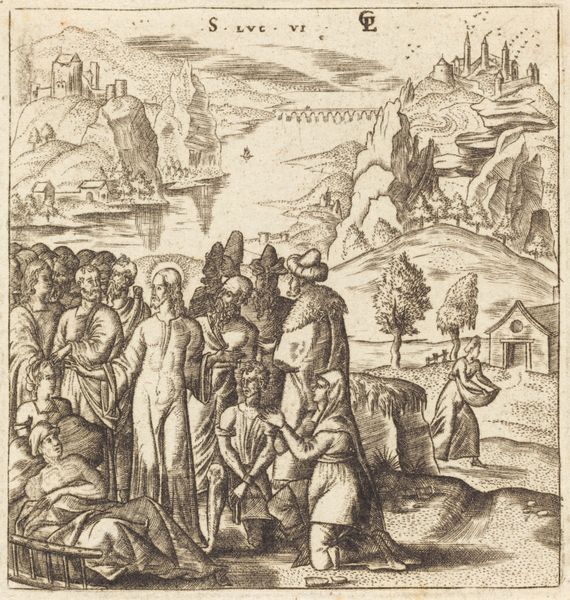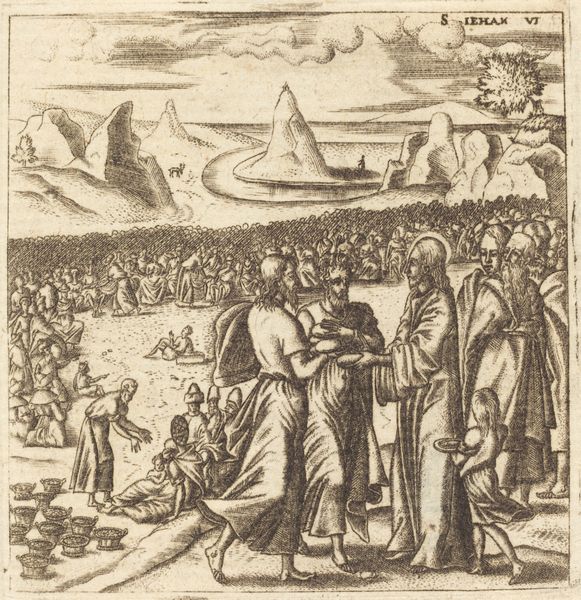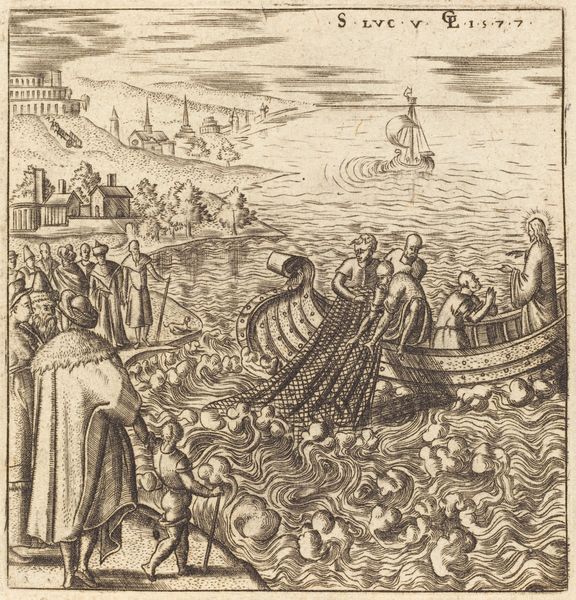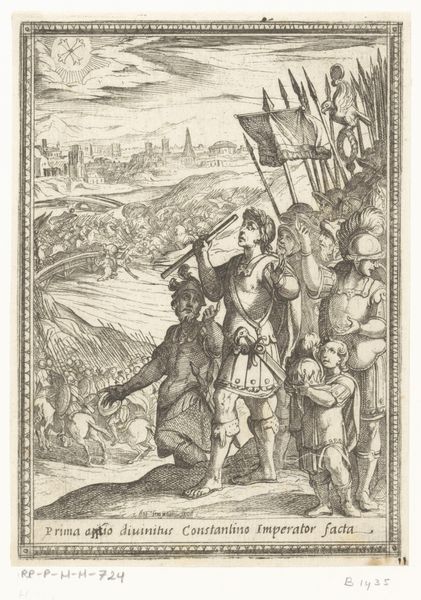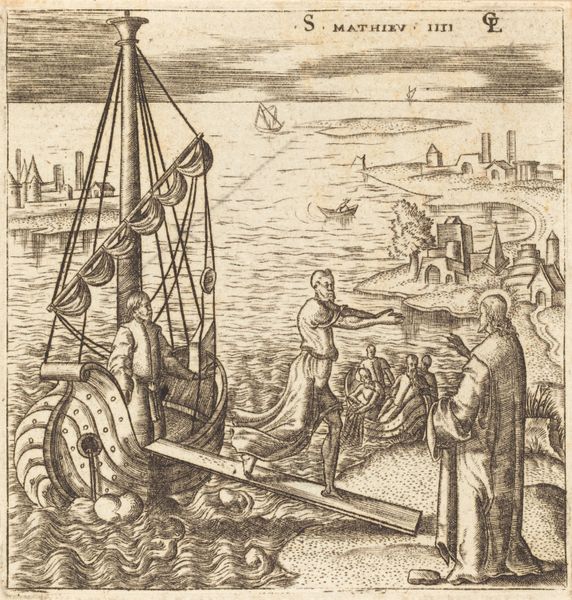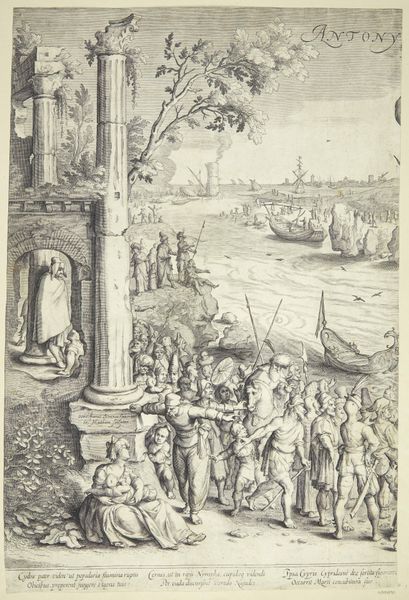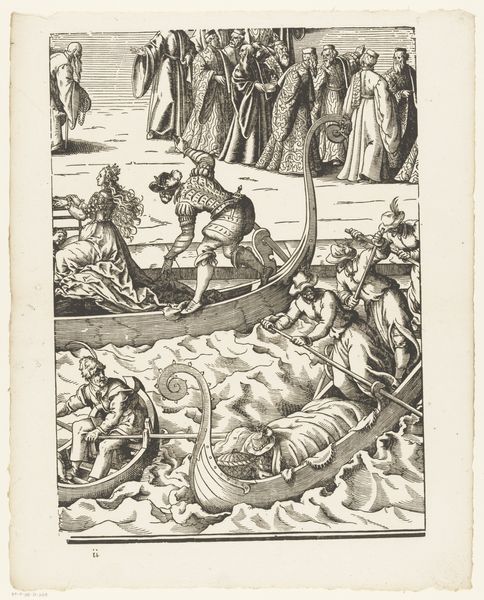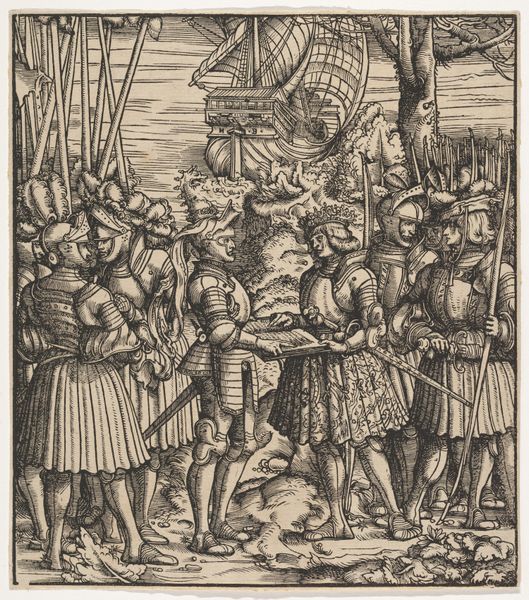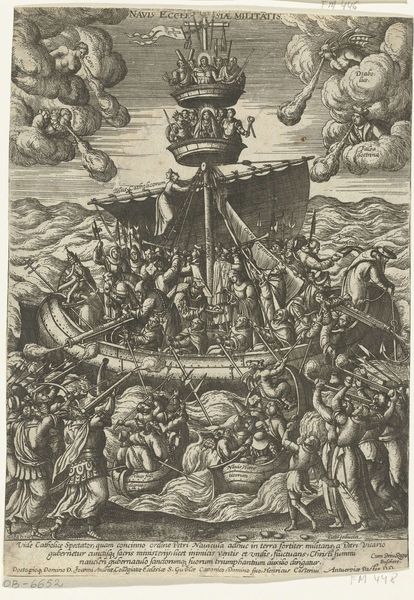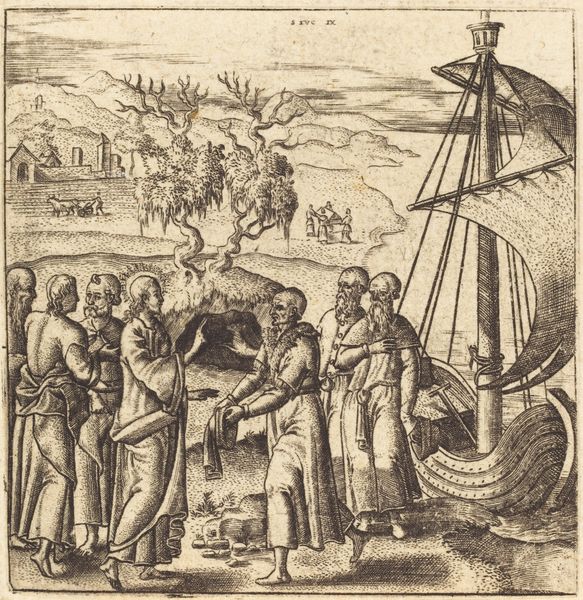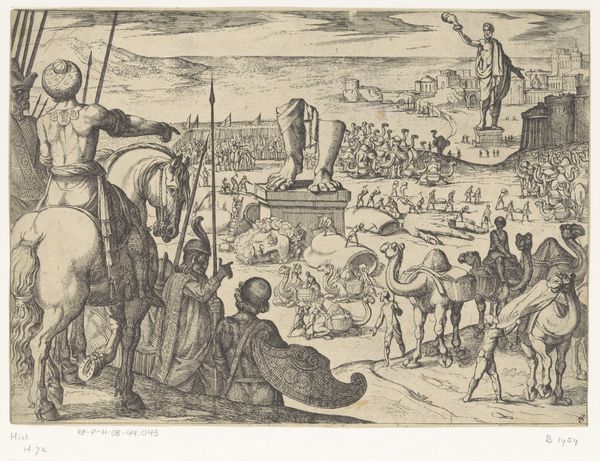
Copyright: National Gallery of Art: CC0 1.0
Léonard Gaultier created this etching, *Christ on the Lake*, using a metal plate, likely copper or iron, and acid. The fineness of the etched lines speaks to the artist's skill. Consider how the process dictates the final image: the acid bites into the metal wherever the artist exposes the plate, creating grooves that hold ink, and leave lines on the paper. Look at the detail in the robes, the waves, the buildings, and the faces, and note the time and labor involved. Each line had to be carefully considered and placed. The printmaking tradition also played a vital role. Etchings like this one were relatively inexpensive, and the circulation of printed images allowed for the broad distribution of religious and cultural ideas during the Reformation. The image becomes an artifact of faith, but also of a particular moment in the history of manufacturing.
Comments
No comments
Be the first to comment and join the conversation on the ultimate creative platform.
